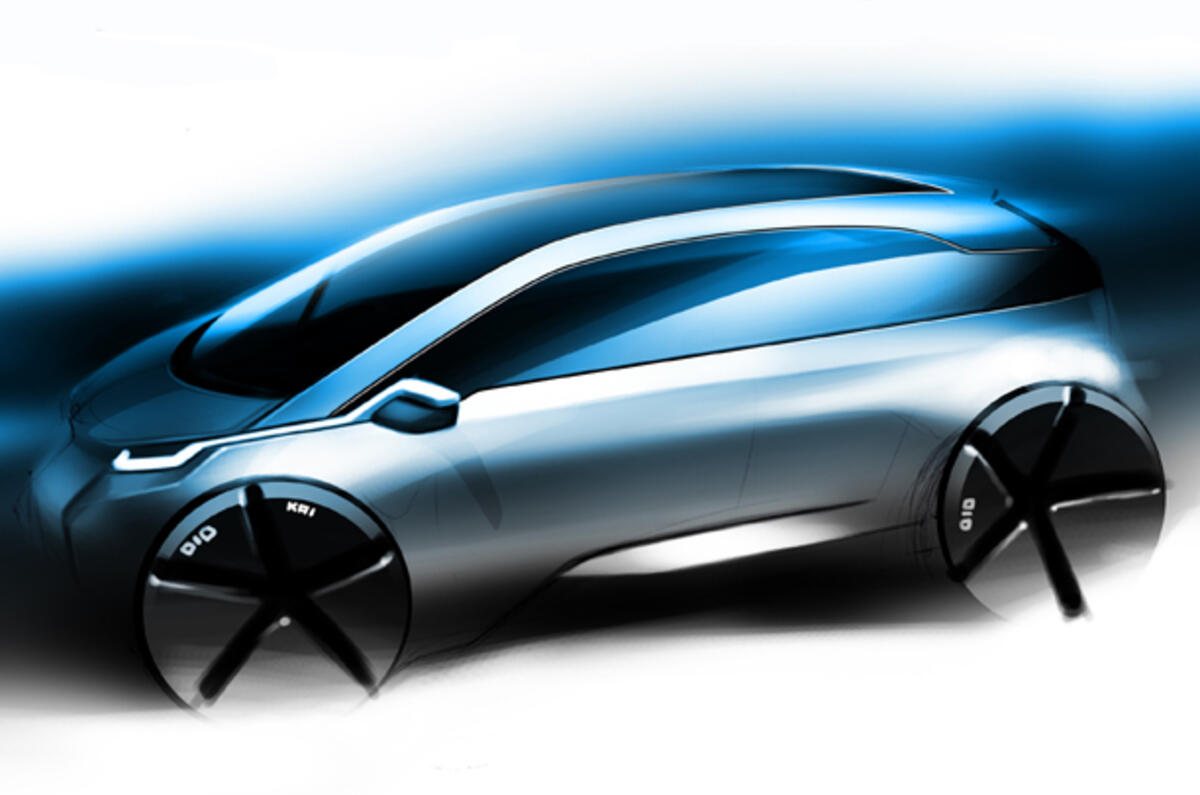BMW has provided the clearest hint yet to the appearance and technical package of its upcoming MCV (MegaCity Vehicle) in a pair of official sketches revealing both two- and four-door hatchback versions of the advanced plug-in electric urban runabout.
Scheduled for launch in 2013, the new four seater has been conceived under a future orientated sustained mobility program at the German car maker’s R&D centre in Munich that takes the internal working title project-i – a name that alludes to the resurrection of the historic Isetta badgeplate, possibly reworked as i-setta.
See the official pics of the BMW MCV, plus it in development
The MCV, to be marketed under an as yet undisclosed BMW sub-brand, brings together a series of innovative technologies that provide it with simple construction, low weight and full zero emission capability in a car BMW says will carry a price premium over similarly sized small cars but which it is adamant will still prove affordable enough to see it hit an annual production target of 50,000 at its Leipzig factory in Germany by the middle of the decade.
"In the future, leadership in the premium segment will belong to whichever manufacturer builds its products in the most efficient and resource-friendly way – and offers its customers the most advanced and exciting solutions for eco-friendly personal mobility," according to BMW’s Martin Arlt.
The basis for the MCV is a lightweight carbon fibre monocoque dubbed LifeDrive. Described by BMW as being revolutionary both in construction and price, it is produced in a highly automated process developed in a co-operation between the German car maker and SGL Carbon that is claimed to dramatically reduce costs compared to existing carbon fibre structures.
“The big hurdle to carbon fibre production in the past has been cost. But with the new production processes we have developed, we are extremely confident we can produce the MCV with the sort of margins required to turn a profit – not a large profit, but a profit nevertheless,” a Munich official involved in project-i told Autocar.
BMW describes the LifeDrive structure as being as strong as steel but fifty per cent lighter than aluminium. It is also more rigid than existing steel monocoque structures and incorporates integral crash nodes design to dissipate energy during collision better than an aluminum space frame. Because it is created in one complete structure, overall production time is claimed to be significantly reduced over that of conventional small cars.
Along with the four seat versions of the MCV alluded to in BMW’s official sketches, work is also said progressing on a smaller two door version aimed at rival Mercedes-Benz’s Smart ForTwo and the Toyota iQ. BMW wouldn’t be drawn on the two seater but said the production process behind the MCV are flexible enough to allow alternative bodystyles.
















Join the debate
Add your comment
Re: BMW Megacity: first official pics
I know it's infantile, but can you imagine Sean Connery pronouncing the name of this car?
Re: BMW Megacity: first official pics
There is a lot of interesting technology on this car. It's the first time I've seen carbon-fibre described as cheap. Sounds like they must have a whole new way of using it that could change car construction. I see the range extended version as potential future purchase.
Re: BMW Megacity: first official pics
The concept drawing is nothing like the prototypes, being tested. What,s the point of showing a great looking concept and then a standard looking boxy prototype ?